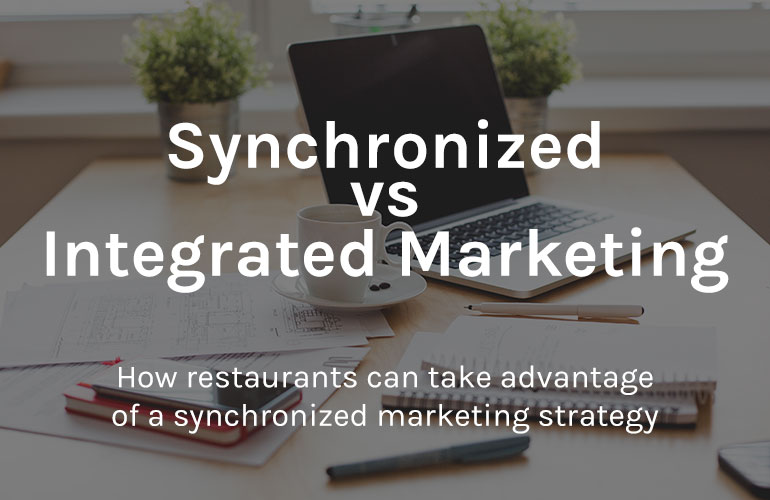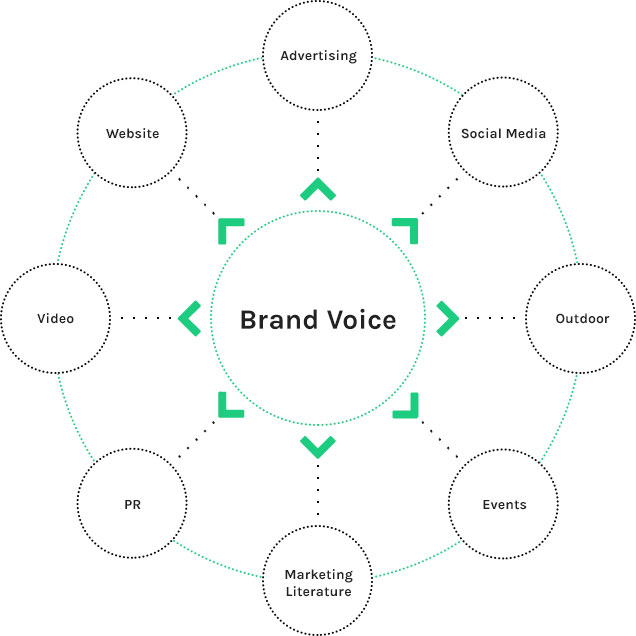Have you heard of synchronized marketing?
Integrated marketing has been the norm for almost 20 years, but with the emergence of social media it’s high time we take a look at how we market restaurants.
Integrated marketing, although a vital part in delivering cross-media messages, lacks the scalability needed to incorporate multiple campaigns with a clear brand focus.
Social media with its continuing conversation has transformed the marketing landscape and the way we consume content, interact with companies and brands and ultimately how we make purchasing decisions.
What is synchronized marketing?
So what is synchronized marketing and how is it different to an integrated approach? By synchronizing your brand message you’re creating a consistent experience for customers no matter the touch point.
It’s not based on an advertising concept or marketing campaign but a singular brand idea.
To quote the DeSantis Breindel whitepaper on the topic; “Synchronization goes beyond integration, allowing the voice of the brand to speak to every target, through every relevant discipline (advertising, public relations, promotion, marketing literature, sales force presentations, outdoor, event marketing, design, etc.) at every touch point. (...)
Done right, Synchronized marketing connects the individual touch points on their own terms, strengthens each and energizes the brand.”
According to the aforementioned white paper, synchronized marketing -- much like synchronized swimming -- enables businesses to use each of their available channels to create a much larger picture than any of them would be able to on their own.
Why use a synchronized approach?
Traditionally a customer might see a print ad, come across the same message online and eventually make their way to your establishment. Nowadays customers are doing their due diligence, a study conducted by Google suggest they have as many as 10 interactions with a brand before taking action.
With today’s ever connected online landscape the likelihood of a potential customer coming in contact with your brand first via Twitter or a mobile app for example are ever increasing.
A synchronized approach alleviates this issue by delivering a consistent experience without having to worry about what stage a potential customer is in the process of making a purchase at your restaurant.
Sending out a single message across your marketing platforms and expecting customers to engage with it is no longer an option. You must use each marketing channel to its unique strength while letting them work with each other to strengthen the brand message.
Being an iterative process this approach also allows you to continuously fine-tune your marketing communications based on real time customer feedback and engagement.
How do you implement synchronized marketing?
Synchronized marketing uses the same foundation as integrated marketing with a focus on a consistent experience for customer on all contact points they might have with your brand, just as you would want to ensure a consistent dining experience for restaurant customers across your multiple locations.
Additionally it applies the development of a singular brand idea which is used as a blueprint for your marketing strategy.
Putting synchronized marketing into action.
1. Define your USP
Defining your unique selling point (USP) is critical when developing a synchronized strategy. You want to detail exactly what makes you different and what you offer that no one else does.
Ask yourself how your services benefits your customers better than anyone else. Look at describing your target audience, the problem you’re solving for them and the benefits. Your USP will translate into your brand voice, message and aesthetics.
2. Define your brand’s voice
As synchronized marketing is based on your brand voice, it’s important to define what your brand stands for. Your tone of voice, word usage, logo and design aesthetics are all parts that make up your brand voice. Reference your target customer to create a brand voice that resonates with them.
Having clear guidelines enables you to easily stay consistent in your marketing efforts.
3. Connect your channels
Being cross platform and media compatible synchronized marketing allows you to integrate all of your marketing channels such as print, online, SEO, social and email.
It helps you leverage traditional marketing like mailers and physical print ads by combining it with non-traditional marketing like social media.
Concentrate on the channels you’re comfortable with and produce quality content for them and expand your process as you go along. Having all your channels synchronized and working together will greatly amplify your message.
4. Engage and encourage dialogue
Customers nowadays want to engage with restaurants. They expect their voices to be heard and responded to. Social media is the perfect medium to participate in and encourage conversations with your customers, build awareness, gather feedback and build loyalty.
By having an open dialogue with your restaurant customers you have the opportunity to make them into raving fans, aiding you in promoting your brand.
5. Content
Maybe you’ve heard the phrase recently; “Content is king.” Creating compelling, inspirational or useful content for your target customer is an effective way to take your marketing strategy to the next level.
A synchronized approach gives you the ability to re-use content like videos and blog posts for multiple channels, strengthening all separate pieces and creating a complete and coherent brand voice.
What are you waiting for?
Synchronized marketing is the next logical step in media-centric marketing. By staying consistent and connected you’re increasing your chances of being seen and getting customers into your establishment.
I’d love to hear your thoughts on synchronized marketing, whether or not you have implemented it and if you have what results you’ve seen! Tweet at me at @hiltonandco.








